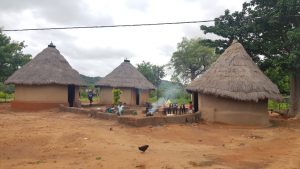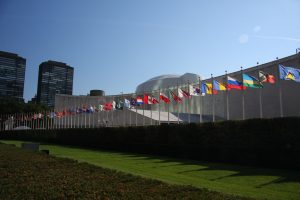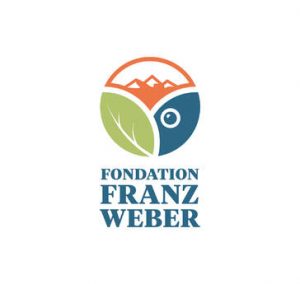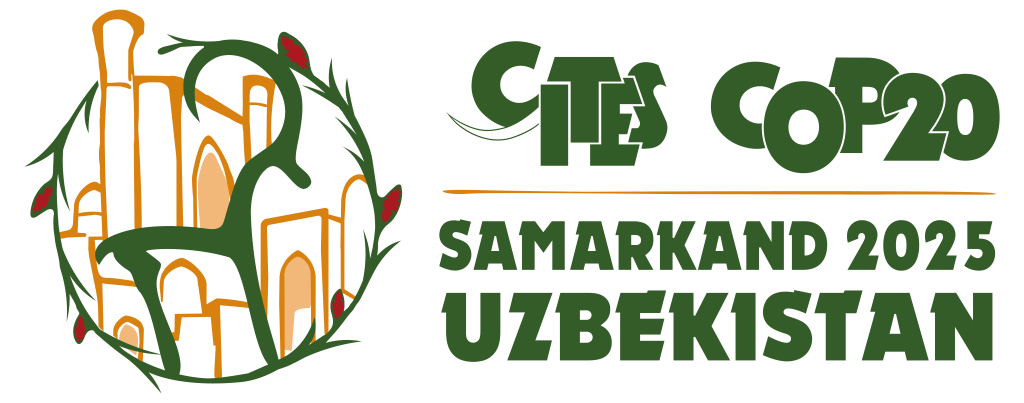By Dr. Nikolas Sellheim
Introduction
In a forthcoming peer-reviewed study in the Review of European, Comparative & International Environmental Law (RECIEL) entitled “Indigenous youth and international conservation law: Five case studies”, myself and Otava Ojanperä (University of Helsinki) examine five agreements and in how far they consider indigenous youth as legitimate stakeholders. The study was carried out under the aegis of the ALL-YOUTH project at the University of Helsinki and was motivated by the fact that important principles, such as intergenerational equity, environmental justice and democracy or stakeholder participation, range rather high on the agenda of international environmental governance bodies. This consequently allows for the hypothesis that international conservation regimes indeed take the voices of the young into account when making decisions. Paired with the fact that indigenous peoples rights are increasingly prominent and the United Nations have put in place a system-wide action plan on youth (Youth-SWAP), an exclusive focus on indigenous youth appeared reasonable.
The five agreements chosen are the 1946 International Convention for the Regulation of Whaling (ICRW); the 1971 Ramsar Convention on Wetlands if International Importance Especially as Waterfowl Habitat (Ramsar Convention); the 1973 Convention on International Trade in Endangered Species of Wild Fauna and Flora (CITES); the 1979 Convention in the Conservation of Migratory Species of Wild Animals (CMS); and the 1992 Convention on Biological Diversity (CBD). These five conventions were picked as standing representative for the large body of international conservation law (ICL), because they are widely ratified (e.g. CITES and the CBD), they are prominent concerning their (dys)functionality (ICRW), or they constitute biodiversity conservation initiatives of a global character (Ramsar and CMS). We did not consider the 1972 Convention Concerning the Protection of the World Cultural and Natural Heritage, because it is not exclusively concerned with biodiversity conservation.
Methodology
To determine the degree to which ICL considers indigenous youth as legitimate stakeholders, we conducted two types of analysis. First, we looked at the degree to which the regimes consider the rights and plights of indigenous peoples. After all, the UN Declaration on the Rights of Indigenous Peoples (UNDRIP) enjoys a high level of endorsement worldwide with even the United States having formally endorsed it in 2010. Second, we look at the way youth is being considered. While there is no universally adopted definition of the term ‘youth’, we apply the UN working definition and consider youth to be young people between 15 and 24 years of age.
Accordingly, we coded the reports of the conferences of the parties (COPs) of the regimes as well as resolutions and decisions around the words ‘youth’, ‘young’, ‘children’, ‘native’, ‘indigenous’, and ‘aboriginal’. This allowed for a determination of, first, whether there is an ongoing debate on indigenous rights and youth and, second, how often these terms appear. Additionally, the regimes were also analysed in regard to institutional developments, i.e. new regime bodies, such as working groups or task forces, that have been put in place in order to adjust to changing conditions and developments.
A key aspect of our study circles around the degree and mode of participation. To this end, we consider the term in a two-fold manner: first, what kind of possibilities do indigenous youth have to participate in regular in-session meetings, such as COPs or meetings of other regime bodies. Second, we consider in how far indigenous youth are able to participate in intersessional decision-making processes, for instance when setting the agendas for in-session meetings. While the main focus lies on the in-session meetings, this is by no means the only way to be able to partake in environmental governance.
Results
The degree to which the regimes in question consider and enable the participation of indigenous youth varies greatly. The results presented here follow the chronological order of adoption of the regime in question.
ICRW, 1946
The ICRW was opened for signature on 3 December 1946 and entered into force in November 1948. Then also the IWC took up its work. While originally having a membership of 15, currently the IWC counts 88 states as members with Japan having left the organisation in July 2019. Over the last decades, the IWC has made headlines because of its ‘deadlock’ in which different interests collide, which, in the end, was exactly the reason for Japan having to leave the IWC. This is because in 1982 a 3/4 majority of IWC members voted for a zero-catch-quota for commercial whaling, which, despite it originally aimed to be for 10 years, is still in force. This zero-catch-quota is widely known as the whaling ‘moratorium’.

The ICRW recognises three distinct types of whaling: commercial whaling, special permit (‘scientific’) whaling and Aboriginal Subsistence Whaling (ASW). It is the latter which is of relevance for our purposes. ASW is carried out in four countries: Inuit and Makah in the United States, the Chukchi of Russia, in Greenland by Greenlanders and in Saint Vincent and the Grenadines by the Bequia Islanders.
From the outset, whaling by aboriginal peoples was to be treated differently than commercial whaling as the impacts of opportunistic or single takes were never considered detrimental to the conservation status of a whale stock. Yet, in order to be recognised in the ASW by the IWC, aboriginal peoples are to document that they have a need for whales in order to be given a quota. This documentation occurs through the nation state via a ‘Needs Statement’.
While the interests of indigenous/aboriginal peoples are in principle recognised, there are systemic difficulties concerning their actual inclusion. For instance, there is no mechanism in place that ensures that aboriginal representatives can in fact participate in the bi-annual meetings of the Commission, in intercessional activities or in the IWC’s Scientific Committee. Further, it is up to the nation states to present and endorse the Needs Statement. For instance, when Japan was still member of the IWC, it never presented one at the behest of the aboriginal Ainu even though they have expressed their interest in resuming subsistence whaling. It is also the nation states which determines whether their country delegations are to include indigenous representatives as well. This is to say that just because there might be ASW carried out in one country, this does not automatically mean that aboriginal whalers of that country will have a say. Even though there is an Aboriginal Subsistence Whaling sub-committee, this is not automatically chaired by an aboriginal person. In fact, the current chairmanship is held by a representative from Switzerland.
An even more dire picture is painted when we take a look at the role of youth: neither the Convention itself nor any body that forms the IWC has a policy on youth involvement in place. Consequently, it is, in principle, up to the nation states or, and this is more likely, up to organisations to send youth representatives to the meetings. Given that the IWC has been a battleground of different interests at least since the adoption of the moratorium, it is not surprising that it has not developed a policy for youth involvement: imagining even other stakeholders than nation states to be involved in the debates surrounding whaling is difficult. After all, it is NGOs that push the narrative substantially.
The Whaling Convention itself and its implementing body, the IWC, have thus far managed to move towards indigenous/aboriginal peoples by recognising Aboriginal Subsistence Whaling as a distinct category of whaling. Beyond that, however, the strategic inclusion of indigenous peoples and even indigenous youth shows no movement whatsoever. Even at 75 years, the IWC is a very long way from becoming an organisation that corresponds to state-of-the-art conservation bodies.
Ramsar, 1971
The Ramsar Convention on Wetlands of International Importance Especially as Waterfowl Habitat – commonly referred to as the Ramsar Convention – is one of the oldest multilateral biodiversity treaties in the world. It was concluded already in 1971 and has 171 parties. These 171 parties decide which wetland areas under their jurisdiction is to be conserved.

A fundamental concept for the Ramsar Convention is the concept of ‘wise use’, which appears in article 3.1. In many other conventions, this principle is also referred to as ‘sustainable use’ or ‘sustainable utilisation’. But up until 1990, it was not entirely clear what ‘wise use’ actually entailed, so the parties adopted guidelines on the concept, which stipulated that any management measures of wetlands were to include local people and also were to take account of their requirements.
A few years later, these guidelines were extended and it was called for the active and informed participation of local and indigenous people. Also the national Ramsar Committees as well as national delegations that are sent to the Conferences of the Parties are to be joined by local and indigenous delegates.
Up until this point, therefore, the participation of local and indigenous populations in managing Ramsar sites as well as in the decision-making process has become an increasingly important issue for the convention. Indigenous youth became explicitly recognised in 1999 when a resolution to establish and strengthen local communities’ and indigenous people’s participation in the management of wetlands called on those who facilitate the efforts of engage local and indigenous people also ensure the involvement of women and youth of the community.
While this resolution did not constitute implementable requirements, it nevertheless turned into a well-established initiative to engage youth in the management of wetlands. The Ramsar website even goes so far and holds a subpage on youth engagement (<a href=”https://www.ramsar.org/activities/youth-engagement”>here</a>). Here we find the Youth Engagement Thematic Group, which was formed as part of the 2013 Ramsar Culture Network. The Youth Engagement Group aims to 1. collate youth engagement information relating to culture and wetlands; 2. develop ‘lessons leaned’ concerning youth engagement, which is to include suggestions for integration into implementing measures of the convention; and 3. explore new and enhanced ways of engaging youth in contexts of culture and wetlands.
The first actual activities of the Youth Engagement Group occurred in 2018 at the Conference of the Parties in Dubai. Here, a side event and a workshop were hosted that aimed to discuss and develop a common vision for youth engagement in the convention. In other words, youth are becoming increasingly important as partakers in the conservation discourse of Ramsar. Here it also becomes clear that it is not only the attendance of the Conferences of the Parties, which is of importance, but rather of making youth integral to the entire conservation and implementation processes.
While indigenous youth are explicitly mentioned, this integration of youth in the conservation discourse occurs rather along lines of culture and not ethnicity. It can therefore also be any cultural link of local youth to wetlands, which determine the way youth are being considered.
CITES, 1973
When the Convention on International Trade in Endangered Species of Wild Fauna and Flora (CITES) was adopted in March 1973, the discourse on including indigenous peoples into the decision-making processes was just emerging. Now, almost 50 years later, CITES has become a fierce battleground of competing interests, similar, yet not quite as bad, as in the International Whaling Commission (IWC). CITES works through three Appendices: on Appendix I, species are listed in which international trade is principally prohibited; Appendix II lists species the international trade in which is controlled and regulated while Appendix III lists species that are subject to national trade restrictions, but that do not face international control.

The raison d’être of CITES is to halt biodiversity loss through the restriction and control of trade. But as many a scholar has shown, the causes of species decline are hardly based on trade, but rather a conglomerate of different factors. Therefore, only in combination with other conservation treaties CITES contributes to a biodiversity conservation regime.
Even though it has been widely recognised that indigenous peoples and youth are important stakeholders in the conservation discourse, CITES has fully evaded the question of youth up until 2016 when the 17th Conference of the Parties (CoP17) was held in South Africa. Here, proposed by South Africa and the United States, Resolution 17.5 on Youth Engagement was adopted. In this resolution, youth are finally recognised as important future decision-makers and skill-holders for the future. Therefore, the resolution calls on parties to closely work together with universities and youth groups, to include youth representatives in country delegations and to engage youth to actively participate in the CITES decision-making processes.
In how far this is practically implementable remains to be seen, however. One issue that exemplifies the difficulties of turning policy ideas into concrete initiatives is the inclusion of local communities into the decision-making process. At CoP18 in 2019 I was able to participate in the intra-sessional working group on rural communities. Several hours country and organisational representatives tried to find a solution concerning different issues, such as the legal standing of a proposed Rural Communities Committee or what terminology was to be applied: would it be ‘peasants’, ‘rural’ communities or ‘indigenous’ peoples? After all, the terminology would have quite important legal implications. Not surprisingly, no consensus could be found – also because of time constraints – and the issue was pretty much postponed to CoP19.
This is to say that CITES has thus far not managed to find an adequate way of dealing with the involvement of local communities and indigenous peoples. Since this is the case, it is not surprising that the involvement of indigenous youth is not far advanced either. While there are initiatives to pay more attention to the interests of youth, the example of rural communities shows the inertia of CITES in turning a resolution into practice.
CMS, 1979
The Convention on Conservation of Migratory Species (CMS) is a global convention, yet also with regional applicability. It works through two appendices: Appendix I includes species which are to be fully protected, unless a take is necessary for exceptional purposes. Appendix II includes species that face conservation concerns. In order to tackle these, CMS parties are to enter into specific agreements that either concern a specific species or species in a specific region. These agreements are stand-along instruments and may have a different membership than the CMS itself, which currently holds 132 parties.

From the outset, the convention recognises traditional subsistence users (article III.5). Since COP4 in 1994, a steady discourse on indigenous peoples as wardens and users of protected wildlife has developed, which means that compared to other conventions, indigenous peoples appear to range rather high on the convention’s agenda.
That being said, the CMS does not have a mechanism for the involvement of local communities en gros in place. It is therefore up to the state parties to decide in how far local communities can participate in the decision-making processes. This also means that despite the fact that indigenous peoples are frequently referred to in the CMS documentation, no subsidiary body or working group exists that exclusively deal with the concerns of indigenous peoples.
Similarly, no established discourse on youth exists until COP13 in 2020. Here, the European Union recognised the potential of a draft resolution, which was to explore options for the “engagement with indigenous peoples, youth groups and local communities” (CMS, 2020, p. 17). In how far this is to translate into action remains to be seen.
While these are recognisable shortcomings, the strength of the CMS lies in its capacity-building and outreach programmes. Capacity building aims to provide tools and workshops to sharpen the conservation strategies, activities and objectives for a specific country or region. In that context, the integration of traditional knowledge and the voices of indigenous youth play an important role. Outreach is achieved through initiatives such as the World Migratory Bird Day or the Year of the Bat, which take conservation issues to a younger audience.
CBD, 1992
The Convention on Biological Diversity is a framework convention for the conservation of the natural environment. Contrary to the other conventions in our study, the CBD rather provides for standards for the sustainable use and conservation of biodiversity, rather than being a management body. It therefore does not set specific management rules, but rather aims to provide for the application of the principles developed at the Rio Summit 1992. With the exception of the United States and the Holy See, all UN Member States are party to the CBD. Under its umbrella, thus far two separate agreements have been concluded: the 2000 Cartagena Protocol on Biosafety and the 2010 Nagoya Protocol on Access and Benefit-Sharing. These protocols have their own membership and we did not consider them in depth.

The convention text recognises indigenous peoples and local communities on several occasions. Most prominently ranges article 8 (j), which recognises the link between traditional knowledge and the conservation of biodiversity. Also article 10 (c) considers “customary use of biological resources in accordance with traditional cultural practices”. Throughout the convention text common reference is made to the sustainable use of biodiversity. By definition, this holds a future-oriented dimension, while the convention refers to future generations merely twice.
At COP4 in 1998 an open-ended working group on article 8 (j) and related provisions was established. This working group was to provide advice on the way local and indigenous knowledge can be better protected. Over time, this working group has produced integral parts of the convention, such as the 2004 Akwé:Kon Guidelines on environmental and social impact assessments. Also the accompanying ethical code were adopted as a result of the working group. Both of these documents call for the consideration of youth as part of a community structure.
Since 2010, the Global Youth Biodiversity Network (GYBN) exists that has become a strong voice for the link between conservation and the interests of youth. More than 280 member organisations comprise the network, emerging out of 140 countries. The dedicated blog of the network allows youth to actively engage in the meetings of the CBD.
Discussion and conclusion
A key finding from our work is that none of the regimes that we analysed specifically deals with indigenous youth and a unique group of stakeholders. That means that none of the regimes has established a subsidiary body that combines the advancement of the rights of indigenous people with the principle of intergenerational equity and sustainable development. Only indirectly indigenous youth is referred to by endorsing the UNDRIP, which itself considers indigenous youth, or as part of a discourse on youth in general. This being said, apart from the CBD’s GYBN and the Youth Engagement Group under Ramsar, none of the regimes under scrutiny strategically consider youth. Only recently the idea of involving youth in the decision-making process, either as stakeholders with their own voice or as subjects in decision making, has evolved.
The most controversial regimes in this regard are the ICRW and CITES. The former shows no movement towards paying greater attention to the voices of indigenous peoples, nor does it pay any regard to the interests of (indigenous) youth. The latter at least has shown some movement since 2016. However, both regimes fail to pay due respect to indigenous communities, particularly as having their own voice in the decision-making processes.
This lets us conclude that despite the importance of Rio principles such as intergenerational equity, environmental justice or sustainable development, paired with the increasing rights and recognition of indigenous peoples, the current state of international conservation law does do justice to indigenous youth. While the focus on internal affairs is somewhat understandable in regimes that are marked by internal strives — ICRW and CITES — in the case of the CMS, for example, there is no clearly discernible reason why no increasing attention is being paid to the generations to come, particularly when considering that the convention allows for traditional subsistence hunting.
References
- CMS (2020). Report of the 13th Meeting of the Conference of the Parties to the Convention on the Conservation of Migratory Species of Wild Animals. Bonn: CMS Secretariat.
Contact Nikolas Sellheim: sellheim.consulting@gmail.com




